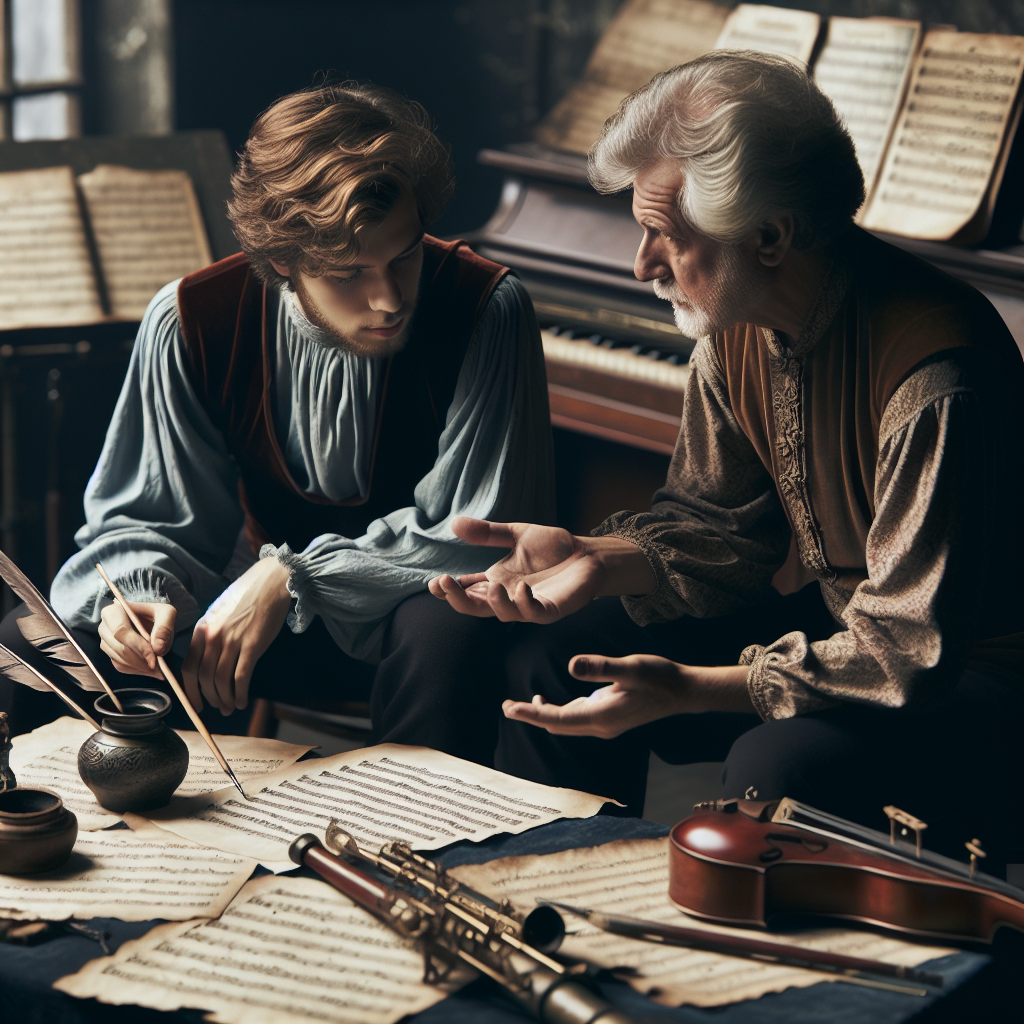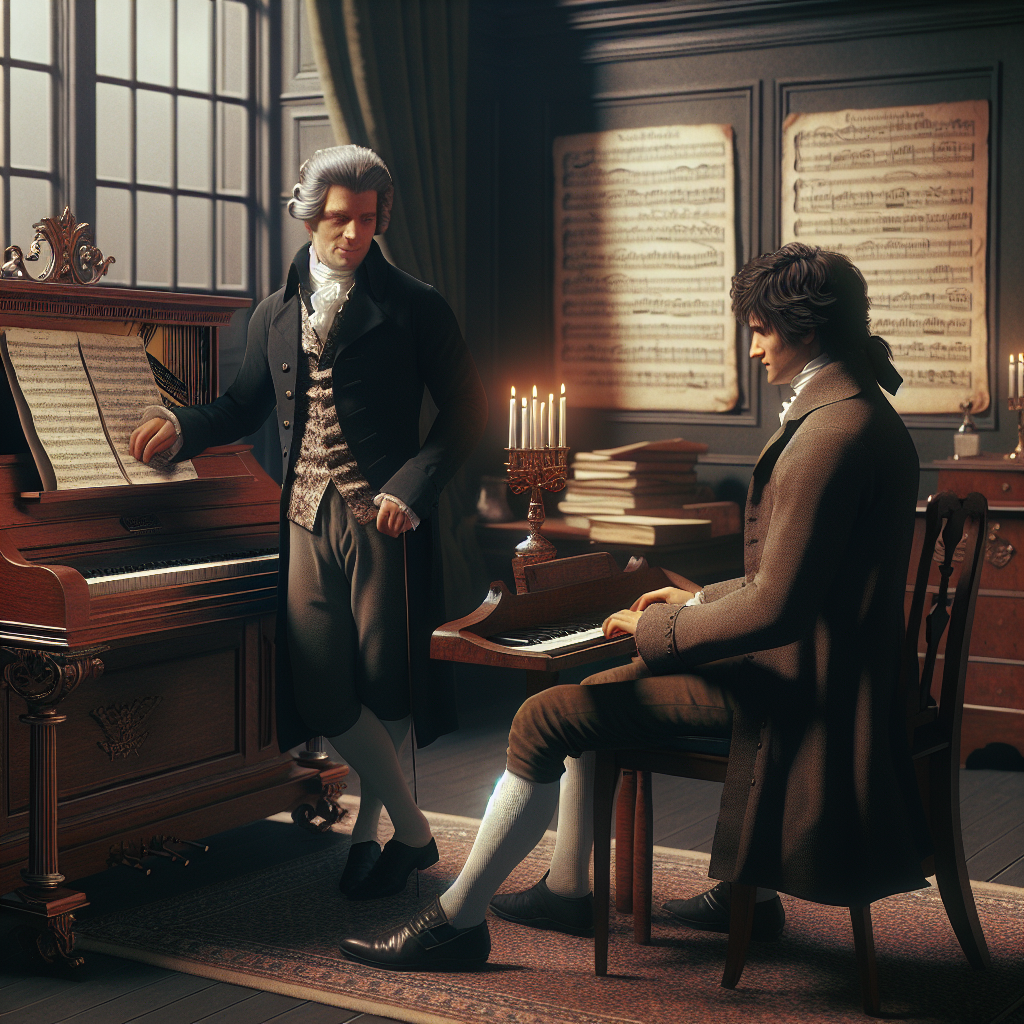
Haydn and Beethoven: Teacher, Mentor, and Musical Interactions
Ludwig van Beethoven is widely recognized as one of the greatest composers in Western musical history. His life and works have become legendary, forming a cornerstone of classical music repertoire. However, Beethoven’s formative years and early career were shaped significantly by his interactions with his contemporaries, most notably his teacher and mentor, Joseph Haydn. The apprenticeship between these two musical giants was marked by creative exploration, mutual respect, and occasional tension, reflecting the complex dynamics of their relationship. Apart from Haydn, Beethoven was influenced by a host of other musicians and composers of his time. This article will delve into the historical context, examining the teacher-mentor relationship between Haydn and Beethoven, while also shedding light on other musical interactions that played influential roles in Beethoven’s development.
Early Life and Influences
Ludwig van Beethoven was born on December 17, 1770, in Bonn, Germany. From a young age, his prodigious talents in music were evident. His father, Johann van Beethoven, was a musician in the Electoral court and served as Beethoven’s first music teacher. Yet, it was the broader musical environment of Bonn that significantly influenced the young Beethoven. The city was then a cultural hub, providing him access to various musical forms and compositions. Inspired by the works of Carl Philipp Emanuel Bach and Wolfgang Amadeus Mozart, Beethoven began composing at an early age, showing signs of a burgeoning genius.
In 1792, the 22-year-old Beethoven moved to Vienna, which was then the epicenter of the European classical music scene. Vienna was home to some of the luminaries of classical music, including Mozart and Haydn. Despite the tragedy of Mozart’s recent passing, Vienna remained abuzz with opportunities for a young composer eager to make his mark. There, Beethoven’s formal musical education would take a pivotal turn as he came under the tutelage of Joseph Haydn.
Beethoven Meets Haydn
Joseph Haydn, often referred to as the “Father of the Symphony” and the “Father of the String Quartet,” was a towering figure in the world of music. By 1792, Haydn’s reputation was at its zenith; he was universally acclaimed for his prolific output and the innovative spirit of his compositions. Beethoven’s introduction to Haydn occurred as Haydn passed through Bonn en route to London. Impressed by Beethoven’s early compositions and recognizing his immense potential, Haydn agreed to mentor him in Vienna.
Beethoven’s initial lessons with Haydn started in earnest upon his arrival in Vienna. It was a period of intense study and development. Haydn exposed Beethoven to the techniques of counterpoint, an essential skill for any serious composer of the time. Despite Beethoven’s profound respect for Haydn, their relationship was not without its difficulties. Beethoven was fiercely independent and harbored a relentless drive for originality, qualities that occasionally clashed with Haydn’s more structured and traditional approach to composition.
Moreover, Beethoven aspired for his own distinct voice in the musical world and was wary of being seen merely as a ‘pupil of Haydn.’ Nevertheless, the fundamentals of composition and the structural discipline inculcated by Haydn remained with Beethoven throughout his career, underscoring the complicated yet foundational nature of their mentor-student relationship.

Musical Interactions and Collaborations
Despite the occasional frictions, the musical dialogue between Haydn and Beethoven yielded profound results. Haydn’s teachings on counterpoint are evident in Beethoven’s early works, such as his Opus 1 piano trios. Moreover, Beethoven’s engagement with Haydn extended beyond his official tutelage. Both composers influenced and responded to each other’s works through indirect musical dialogues. For instance, Beethoven’s “Eroica” Symphony, a daring departure from traditional symphonic forms, can be seen as an expansion of the adventurous spirit found in Haydn’s late symphonies.
Additionally, Beethoven’s dedication to his craft often found him seeking out other contemporaries for enrichment and collaboration. He studied briefly with Johann Georg Albrechtsberger, famed for his expertise in counterpoint and fugue, and Antonio Salieri, who was highly respected for his operatic compositions. These interactions further enriched Beethoven’s already complex musical language, enabling him to blend the rigorous formal structures imparted by Haydn with the expressive, emotionally charged style he learned from other mentors.
Interestingly, Beethoven’s relationships with his mentors and contemporaries formed a crucible in which his unique musical voice emerged. Haydn’s influence, in particular, provided a bedrock of classical traditions, against which Beethoven’s innovative genius could assert itself.
The Legacy of their Relationship
The mentor-student relationship between Haydn and Beethoven left an indelible mark on Western classical music. It was characterized by mutual respect and a shared commitment to the art of composition, despite the occasional friction. Haydn’s role in Beethoven’s development cannot be underestimated; he provided the young composer with a technical foundation and a sense of professional discipline.
Elevating this discussion to a broader historical context, Haydn’s accomplishments had already begun to redefine the classical forms of the symphony and string quartet. Beethoven, who built on these innovations, endeavored to push these structures to new heights. This dynamic interaction exemplifies how artistic mentorship can lead to breakthrough innovations.
However, it’s essential to note that Beethoven was not merely molded by his mentors. His relentless push for originality and emotional depth added layers previously unexplored within the classical tradition. The “Eroica” Symphony, the “Moonlight Sonata,” and the “Fifth Symphony” reflect his capacity to integrate rigorous classical forms with passionate, individualistic expression – a legacy that traces back to his initial tutelage under Haydn, yet distinctly his own.
Other Influences and Contemporaries
Beyond Haydn, Beethoven’s artistic development was influenced by a variety of other musicians and composers. For instance, the works of Johann Sebastian Bach provided an invaluable source of technical and expressive inspiration. Beethoven’s admiration for Bach is particularly evident in his late compositions, where he seamlessly integrates fugues and counterpoints with emotive melodies.
Beethoven shared a deep artistic kinship with other composers such as Wolfgang Amadeus Mozart, whose early death was a profound loss for Beethoven. Although their interactions were limited, Beethoven’s works often reflect a desire to both learn from and surpass Mozart. Additionally, later figures such as Franz Schubert and Gioachino Rossini were actively part of the same vibrant Viennese musical scene, continually enriching Beethoven’s creative output.
Amidst these influences, Beethoven also engaged in significant professional rivalries. His competitive spirit with composers like Antonio Salieri spurred continual self-improvement and innovation. These dynamics added another layer to Beethoven’s complex musical milieu, illustrating the competitive yet collaborative essence of classical music during this illustrious period.
Conclusion
The relationship between Joseph Haydn and Ludwig van Beethoven is a fascinating study of mentorship and artistic development within the context of classical music. Haydn’s influence on Beethoven was profound, providing a solid foundation upon which the younger composer could build. Despite occasional frictions and Beethoven’s fierce independence, Haydn’s guidance and Beethoven’s relentless quest for originality led to some of the most profound contributions to Western music.
While Haydn provided the architectural blueprints, so to speak, Beethoven filled these forms with unprecedented emotional depth and complexity. Their mentor-student dynamic exemplifies how artistic mentorship, despite its challenges, can catalyze immense creative breakthroughs. Additionally, Beethoven’s engagements with other contemporaries and mentors, like Johann Albrechtsberger, Antonio Salieri, and the influential shadows of Bach and Mozart, created the intricate backdrop against which his genius flourished.
In essence, the story of Haydn and Beethoven is one of mutual respect and significant personal growth, illustrating how the interactions between great minds can lead to a lasting legacy. Their relationship, along with Beethoven’s broader network of influences and contemporaries, encapsulates the spirit of innovation that defined the classical era and left an indelible mark on the world of music.